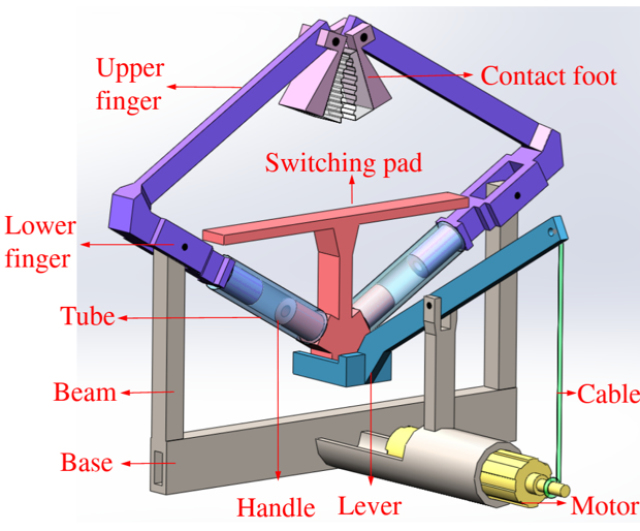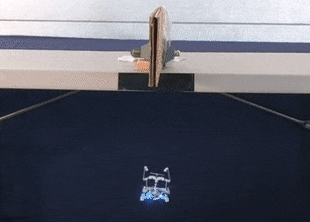American engineers have made a grip for the drone, allowing it to catch on a branch or other objects and turn off the engines to save energy. Unlike other similar developments, the new grip is activated passively without a motor — due to the bistable design and the force of collision with the object to be clamped. The article is published in IEEE/ASME Transactions on Mechatronics.
Multicopters are easy to manufacture and operate, but rather inefficient: because of this, the maximum flight time of an electric multicopter is usually about half an hour, although in some models it is higher-up to about an hour . The only way to save energy is to sit on the ground or get caught on some object that you can continue shooting from.
Developments that allow drones to take a break on an object already exist: last year we talked about a drone with legs that can wrap around a branch or other object, and then turn off the engines. This development had two drawbacks. First, when the drone grabs and releases a branch, it spends energy moving its legs. Second, it can't catch on protrusions that can't be wrapped around.
Engineers led by Jianguo Zhao from the University of Colorado have come up with a new design for the capture of the drone, devoid of these shortcomings. Its main feature is that the capture is activated mechanically, without the need for an electric motor. The developers achieved this by using a bistable structure in the capture. Such structures can move in a certain range, in which there are two points with a minimum of potential energy. If such a structure is taken out of one of two stable States with a minimum of potential energy and transferred through the maximum, it will independently rush to the second stable state. In robotics, such structures are often used to create small, primitive mobile robots, but the authors of the new article found a use for drones.

The principle of operation of the bistable gripper design: when the Central part is in the middle position, the side ones press on it, forcing it to move and occupy one of the two extreme positions
Image source: Haijie Zhang et al. / IEEE/ASME Transactions on Mechatronics, 2020
The gripper consists of a U-shaped frame and the gripper element itself, which is attached to the frame in two places, and it is fixed so that the frame compresses it, forcing it to fold and occupy one of the two extreme positions. On top of the gripping element, there are two contact pads that in one position close and fix the object that is between them (a branch, Board, or other), and in the other they diverge widely, releasing the object.

Gripper design
Image source: Haijie Zhang et al. / IEEE/ASME Transactions on Mechatronics, 2020
The engineers achieved passive activation of the gripper thanks to a small plate attached to the middle part of the gripper element. When it is pressed with sufficient force, the grip moves from one stable position to another and reduces the contact pads to each other. And for spreading the pads to the sides from below, there is an electric motor in the grip that pulls the plate and puts the system in the second stable position. This requires a certain amount of energy, but in most cases, the speed of relaxation of the grip and the start of the flight is not important, so you can use a gearbox and a motor that consumes little energy.
The developers tested the performance of the design experimentally by assembling a prototype of such a drone based on a quadrocopter. They printed most of the capture details on a 3D printer. The strength of activation of capture equal to 0,41 Newton. The capture weight is eight grams, and the total weight of the drone with it is 40 grams. Engineers have successfully tested the drone, showing that it can attach itself to objects by wrapping them around and pinching the grip on the sides of them, and can also take an object out of your hand and transport it to the right place.
Earlier, we talked about another drone that can attach itself to objects and turn off the motors. To do this, it uses micro-spikes that adhere to rough surfaces.
Gregory Copies

